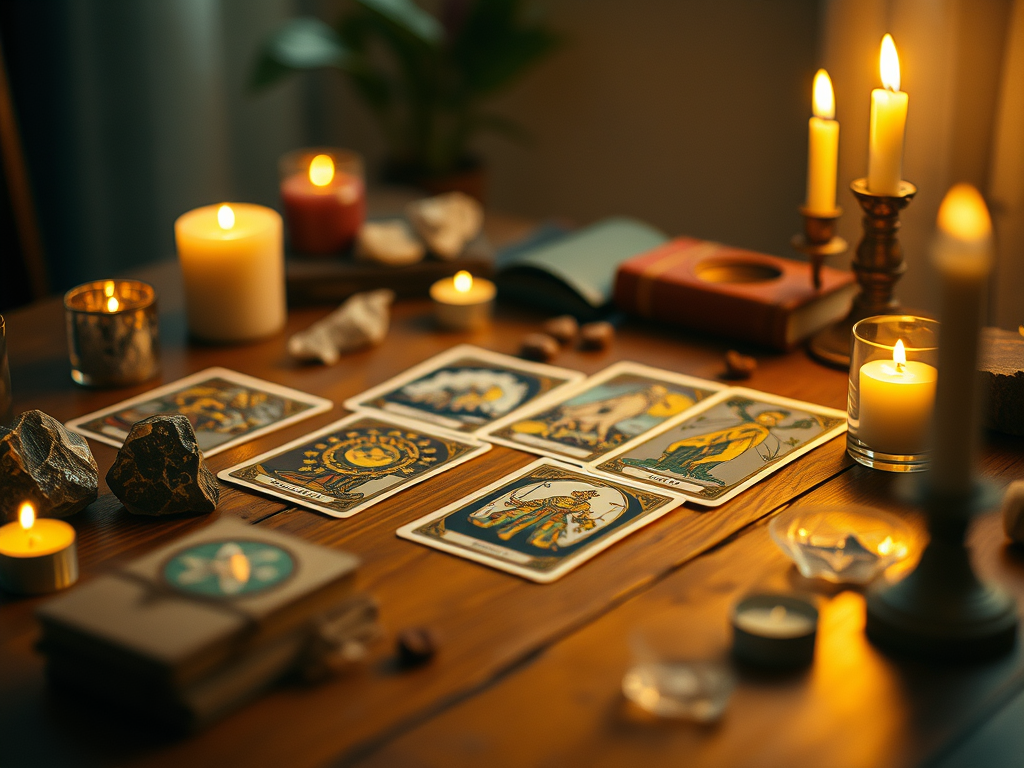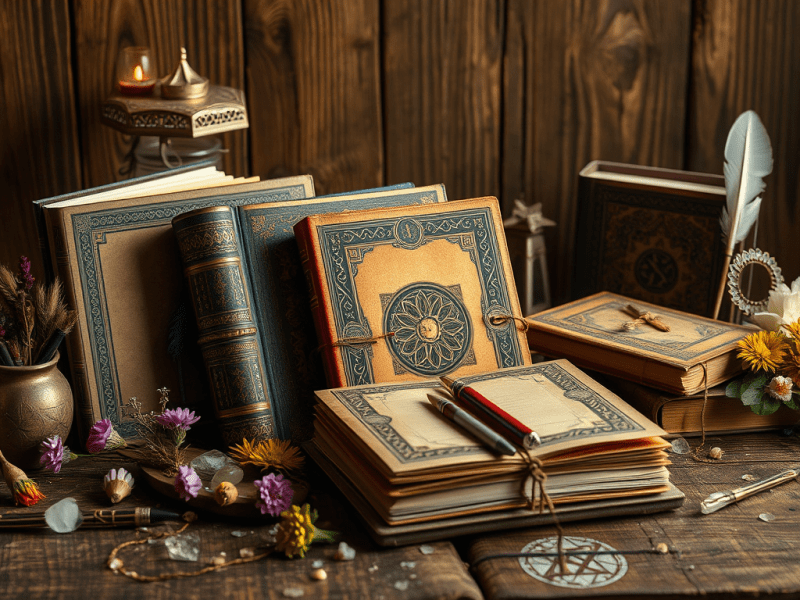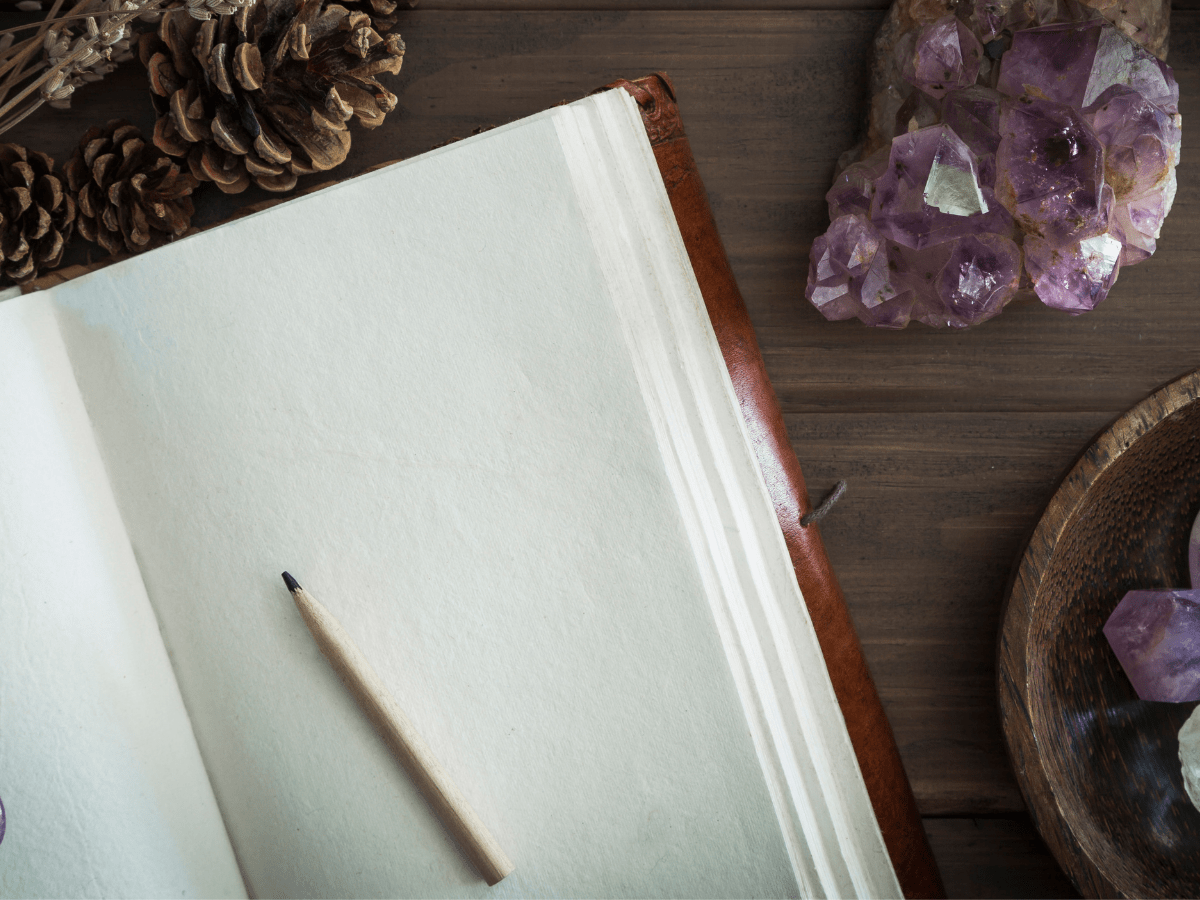Your cart is currently empty!
If you’ve been drawn to start a tarot practice but aren’t sure where to begin, you’re not alone. Tarot has been an incredible tool for self-reflection, personal growth, and spiritual practice for me and getting started can be easier than you might think. Let’s talk through finding the right deck, building a tarot routine, and exploring a few simple spreads that can help you gain insights and confidence as you start your tarot journey.
Choosing a Beginner-Friendly Tarot Deck
Finding a deck that feels right is the first step to building a meaningful tarot practice. Here are a few decks that are particularly welcoming to beginners:
- Rider-Waite-Smith (RWS) Tarot: This classic deck is highly recommended for beginners because it features straightforward, symbolic artwork that corresponds well with most tarot guides and resources. Many of the traditional interpretations reference this deck, making it easier to learn.
- The Modern Witch Tarot: A vibrant, inclusive take on the Rider-Waite-Smith deck, this deck has a modern flair with relatable imagery. Its illustrations are designed with today’s world in mind, making it easy to connect with the meanings.
- The Good Tarot: This is a unique deck perfect for beginners. If you are worried about ‘bad’ readings or interpretations, this deck focuses on uplifting and empowering messages. Each card is designed to encourage personal growth and positive reflection rather than traditional fortune-telling. The art is ethereal and dream-like, drawing on mystical imagery and rich symbolism that resonates with themes of healing and transformation. This is my go-to deck when I know I want a gentler reading.
Remember, the right deck for you is one that you feel drawn to. It’s okay to start with any deck that speaks to you, as your connection with your cards is often more important than their imagery or symbolism. And, if tarot does not call to you, using oracle decks is just as powerful. My first deck was Work Your Light by Rebecca Campbell and I still love to use that deck today.
How to Begin a Tarot Practice
Starting a tarot practice doesn’t require strict rituals or hours of study. Here are some simple steps to get you started:
- Set an Intention: Approach each card pull with an open mind and a specific focus. Your intention could be to find guidance on a particular question, seek self-reflection, or even just practice understanding the cards. Grounding yourself with an intention will help create a meaningful reading experience.
- Cleanse Your Deck: When you first get your deck, it’s a good idea to cleanse it to remove any residual energy and to have it ground into your unique energy. You can do this by passing it through incense smoke, leaving it under the moonlight, or tapping each card lightly. I also like to go through each card when I get a new deck to make sure my essence is entangled in each card.
- Draw a Card Daily: A daily card draw is one of the best ways to get comfortable with tarot. Each morning or evening, pull a single card and reflect on its meaning. Journaling your daily cards will help you learn the meanings and notice patterns in your life. This doesn’t have to be a long ritual, it can be a quick draw and reflection. I like to keep it to 5 minutes or less so that I am more willing to do it daily.
- Take Notes: Keep a tarot journal to track your card pulls, observations, and evolving interpretations. Reflecting on past readings is an excellent way to deepen your understanding of the cards and your intuition.
- Experiment and Trust Your Intuition: While it’s helpful to start with traditional meanings, let yourself notice what personal thoughts or feelings each card brings up. Tarot is a highly intuitive practice, and connecting personally with the cards often brings the most insight. I’ve found that sometimes the traditional card meanings do not resonate with what my intuition is saying – go with your intuition and use the definitions as a guide, but not a rule.
5 Easy Beginner Tarot Spreads
Once you’re comfortable with daily card pulls, try out some simple spreads designed for beginners. These spreads offer just enough guidance without being too overwhelming.
The One-Card Spread
- Great for: Daily reflection, answering a specific question, or gaining general guidance.
- How to do it: Shuffle your deck while focusing on a question, then draw one card and interpret it as your answer.
The Past-Present-Future Spread
- Great for: Understanding a situation’s flow and gaining insight into next steps.
- How to do it: Lay out three cards from left to right, representing past, present, and future. Interpret each card as it relates to that time period.
The Mind-Body-Spirit Spread
- Great for: Checking in with yourself holistically.
- How to do it: Shuffle your cards and lay out three, representing mind, body, and spirit. This spread is useful for understanding how each part of you is balanced or might need attention.
The Two-Card “Yes or No” Spread
- Great for: Yes-or-no questions that need quick clarity.
- How to do it: Draw two cards. If both cards feel positive, it’s a “yes.” If they feel negative, it’s a “no.” If they’re mixed, take it as a “maybe” or “need more time.”
The Clarity Spread
- Great for: Gaining insight and guidance on a specific situation or question.
- How to do it: Shuffle the deck while focusing on your question or situation, then draw three cards:
- Card 1 – The Situation: Represents the core of the situation or question.
- Card 2 – The Obstacle: Highlights the challenge or block you may be facing.
- Card 3 – The Guidance: Offers advice or a next step forward.
Tips for Staying Consistent with Your Tarot Practice
- Make it Part of Your Routine: Find a time in your day, even if it’s just five minutes, to connect with your cards.
- Keep a Tarot Journal: This is an invaluable tool for learning. Jot down card meanings, your personal reflections, and any insights that emerge.
- Be Kind to Yourself: Tarot is a skill that grows over time. You don’t need to memorize all the cards right away or even have “accurate” readings. Trust the process.
Building a tarot practice is a deeply personal and spiritual experience. Whether you’re pulling a single card in the morning or diving into a detailed spread, each reading is a chance to learn, reflect, and grow.
2 responses to “Beginner’s Guide to Starting Your Tarot Practice”
Thank you so much for the deck suggestions, especially for the Good Tarot. I tried my hand at Tarot with the RWS deck and kept finding myself thinking “Well that was depressing and not at all helpful!”. So I quit. But I definitely feel the pull for some sort of tool for communication with my higher/inner self and with the Divine. The Good Tarot looks like the perfect fit for me. And thank you for all the work you put into this blog, it has helped me so much!🤩💙✌🏻
I hope you love the good tarot! It’s truly one of my favorites and I’ve never had a reading with it where I walked away feeling discouraged. Thank you so much for this comment, it means a lot!




Leave a Reply